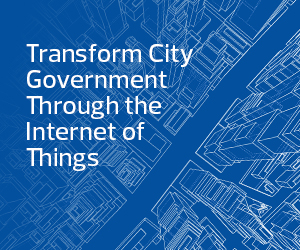No More Climbing Streetlight Poles with Edge Computing
Most cities embed multi-access edge computing into their Internet of Things devices. MEC is a powerful solution for running AI workloads at the edge.
However, many cities have no practical way to update the software running on their edge devices when their needs change. Say a city wants to start using its traffic cameras to monitor wear and tear on roads. A worker may need to be dispatched to each camera, climb the streetlight pole, and either physically replace an existing device or add a new one.
It’s more efficient to use a combination of software-defined infrastructure (SDI), service orchestration and data management. Most agencies already use these tools for other purposes. When applied to the edge, they can provide operations managers with an effective way to remotely manage and control their smart city environments.
LEARN MORE: State and local governments strengthen services through data center optimization.
SDI Connects the Edge and the Data Center
Organizations have been using SDI to manage their Infrastructure as a Service operations for years, but it’s equally effective for managing edge devices. By extending SDI to the edge, an agency can leverage software to connect the edge with its central data center. Operations managers can then easily configure the edge network, optimize the performance of their devices for more accurate and efficient output, make changes to applications running on the devices, and more.
This requires creating a microcloud that sits alongside the organization’s other clouds (public, private or both). Microclouds are small clusters of compute nodes and storage capabilities that reside at the edge of the network. Adding a microcloud extends the boundaries of the organization’s cloud system to the edge. Combined with an SDI, it allows operations to virtually manage their organizations’ edge infrastructures and applications, eliminating the need for physical changes to edge devices.
Deploy and Manage Applications from Anywhere
Many city agencies use a service orchestration system such as Kubernetes or Microsoft Azure to orchestrate parts of their application deployment processes. These systems allow organizations to deploy applications anywhere and manage them from everywhere.
Agencies can take a similar approach to managing their multicloud and edge environments. Pairing service orchestration with a supportive SDI foundation enables application developers and operations managers to easily deploy services throughout their edge ecosystems. Applications can be sent up to the microcloud and managed from anywhere. As with Kubernetes or Azure, those applications can quickly be deployed at scale across the edge environment.
READ MORE: Application modernization increases engagement in hybrid settings.
Data Management Controls How to Process Information
Data management programs such as Amazon Redshift and the open-source Apache Kafka program are great for data management and streaming and have found their way into many city government IT programs. They allow organizations to know where their data is always and control its movement.
These benefits are invaluable when it comes to efficient and effective data processing at the edge. Agencies need to be able to control what data is processed at the edge and how much is streamed back to a data center. For example, time-sensitive data processing and inferencing should take place on the device itself, while information that requires more processing time is transferred back to a central location.
In addition to ensuring that actionable intelligence is delivered in near-real time close to the point of ingestion, data management helps cities save money. Transferring large amounts of data from the edge to an on-premises cloud can use a lot of bandwidth, which can be expensive. Judicious use of data transfer is important, and agencies should strive to do as much processing at the edge as is appropriate.
In 2024, city governments will have the chance to make their municipalities smarter and more connected than ever. The right supporting infrastructure, combined with service orchestration and data management, will help them achieve their goals.











